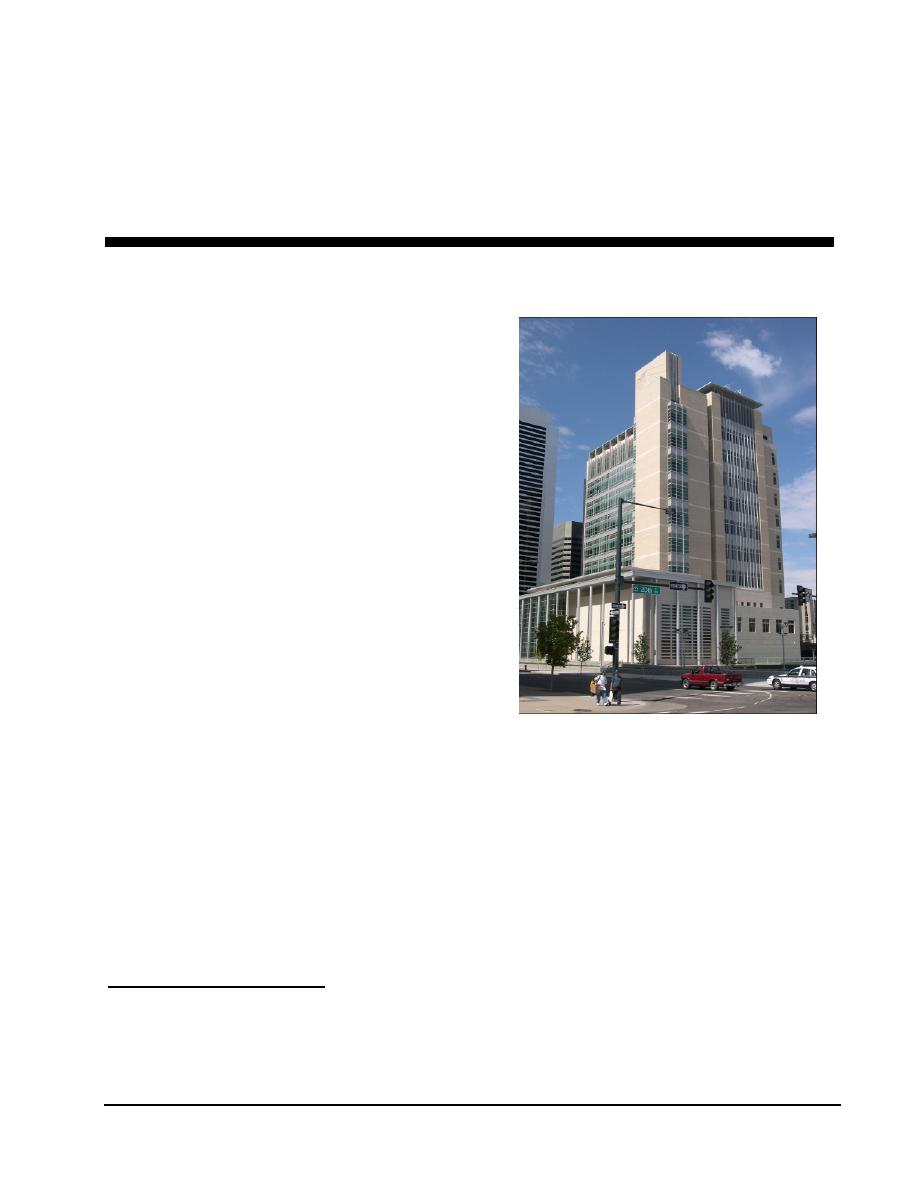
Initial Considerations
Step 4:
Evaluate "No-Cost" and "Low-Cost" Credits
general site development cost, not specific to
In most GSA projects, there will be a number of
LEED.
LEED credits that can be achieved with no
construction cost impact, even though the credit
requirements are not specifically part of GSA's
design standards. A few of the LEED credits may
even result in reduced first costs. In addition, the
models examined in the GSA LEED Cost Study
revealed that a number of other LEED credits can
These "no-cost" and "low-cost" credits present
significant opportunities to project teams. As such,
they should be identified and planned for early in
the design process.
Example
Table 2-4 summarizes the "no-cost" and "low-
cost" credits identified in the "Low-Cost" Gold-
rated Courthouse model of the GSA LEED Cost
Study. The no-cost/low-cost categorization of these
credits can generally be accounted for as follows:
1) Advantageous Site. On many LEED projects, the
characteristics of the project site can earn
credits in the Sustainable Sites category with
Figure 2-5. Alfred A. Arraj U.S. Courthouse,
no- or low-cost impacts. In the Courthouse
Denver, Colorado. GSA buildings are typically
model, for instance, the building is assumed to
located in urban settings, facilitating achievement of
be located in a downtown urban location, with
the LEED Sustainable Site Credit 2: Development
ample access to public transit. This earns the
Density at no cost. (Photo: Don Horn)
project Credits SS-1 (Site Selection), SS-2
(Development Density) and SS-4.1 (Alternative
2) No-Cost/Low-Cost Design Opportunities. A
Transportation, Public Transportation Access).
number of LEED credits can potentially be
As with many of GSA's new Courthouse
achieved at no or low costs through smart
projects, the model is also assumed to be built
planning and integrated design. In the
on a previously developed site, with some site
Courthouse model, for example, three of the
remediation required. This earns Credit SS-3
Sustainable Sites credits (SS-5.1, SS-5.2, and
(Brownfield Redevelopment) at no-cost
SS-6.1) can be achieved by limiting the amount
premium, as the remediation is considered a
of paved area on the site and by planting native
and adaptive plant species for the majority of
In the GSA LEED Cost Study, the "low-cost" category
2
the landscaping. Using native, adaptive plant
was defined for credits that had a construction cost
species can also eliminate the need for
premium under ,000. This is based on projects that
permanent irrigation systems and earn Credits
had baseline constructions costs in the range of -60
WE-1.1 and WE-1.2. Design integration can
million.
GSA LEED APPLICATIONS GUIDE
18



 Previous Page
Previous Page
